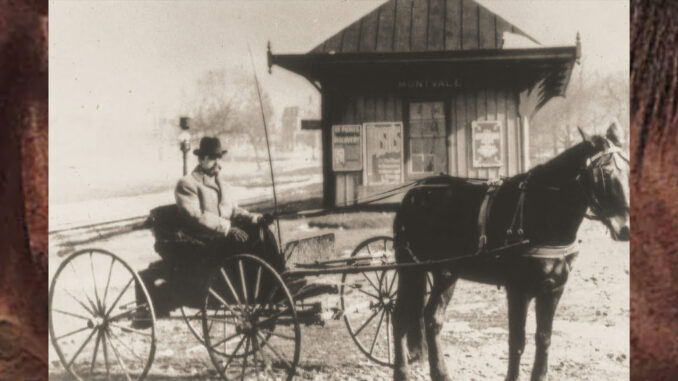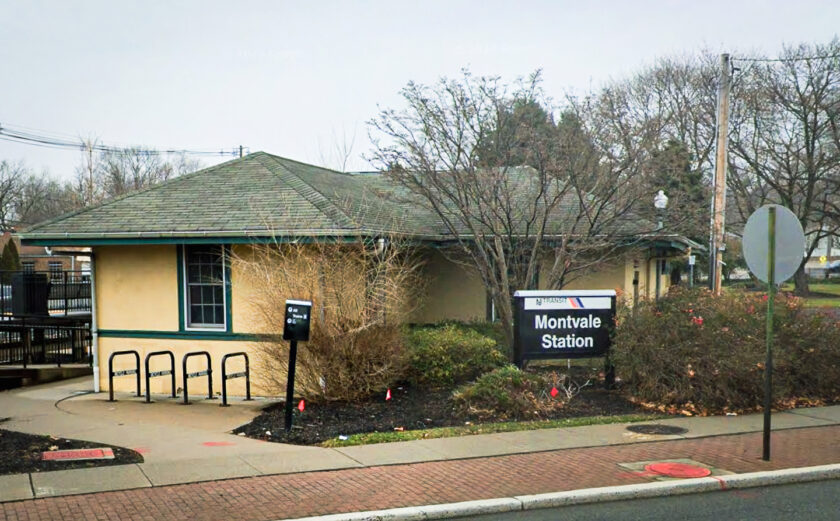
MONTVALE—Ah, modern technology! On a February morning in 2024 you can start your car remotely before even setting foot outside the house. Entering a pre-warmed vehicle, you settle in for a cozy trip: wonderfully warm air is blowing from the vents, the seats are heated, and even the steering wheel has a warming element.
Meanwhile, the man in this week’s featured photograph probably would have settled for windows and doors.
In this image snapped on a winter day in the early 20th century, a man waits in his horse-drawn carriage outside the Montvale train station. It must have recently snowed, as a few spots that had not yet melted are visible on the ground and on the roof of the station in the background.
On such days, our forebears had a few methods for combatting the cold when riding in an open carriage: they would bundle up in warm clothing, cover themselves in lap blankets, and also use foot warmers, which were portable metal boxes into which hot coals were placed. A foot warmer diffusing heated air under a lap blanket made things somewhat more comfortable for a person’s lower half, which helped balance out the frigid air that was blasting the top half. (In any case, it was better than nothing.)
The station in the top photograph no longer stands. The wooden building was destroyed in an apparent act of arson in 1921, and then rebuilt in the 1920s in the same location. That version, through modified, is still in use. Some might recall the period from 1954 to 1971 when the borough leased it from the Erie Railroad for use as a borough hall and police station.

The Pascack Valley railroad line was extended up through Montvale in 1871, and the original train station was built soon after. Before this, the center of town in the rural community was at Spring Valley Road and Summit Avenue—the area traditionally known as Upper Montvale.
When the railroad cut through the vicinity on its way to New York State, it took a route a couple of miles to the east and established a stop at present-day Grand Avenue and Kinderkamack Road, thus shifting the nucleus of Montvale to that location.
